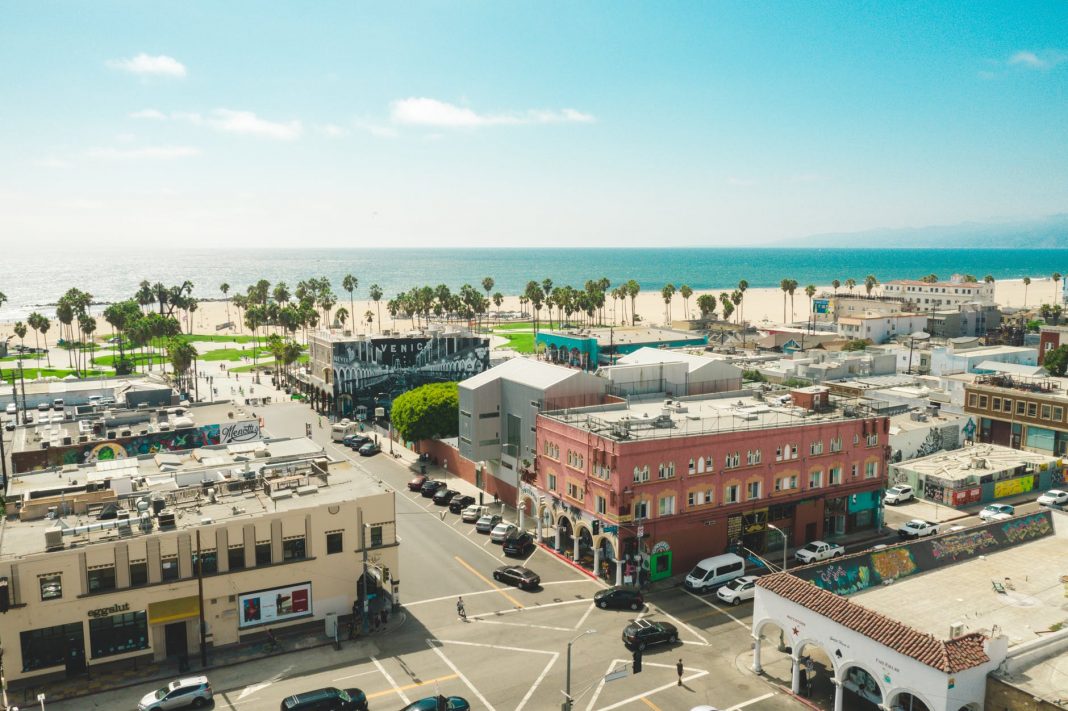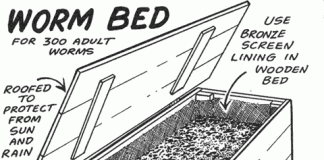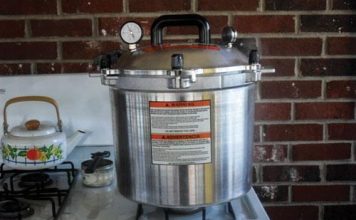 |
|
| Issue #107 • September/October, 2007 |
By now many of us have heard that under a bill proposed by Assemblyman Lloyd Levine (D), the state of California is about to become the first state to legislate what kind of light bulbs you can purchase and which bulbs will be outlawed. I can’t help but envision the border patrol capturing a Nevada resident sneaking across the California border with a sack full of 100 watt incandescent bulbs he hoped to score with a local Home Depot. The state legislators of Rhode Island, Connecticut, and North Carolina are also considering banning incandescent bulbs, which have already been banned by Australia and Canada.
Those 60, 75, and 100 watt incandescent light bulbs you have in your home really do waste a lot of electricity and do not last long, but they are cheap. I just saw a six-pack of 75 watt incandescent light bulbs on sale for less than a dollar for all six, while the compact-fluorescent lamps California wants everyone to buy were selling for $6.00 each.
|
Although replacing incandescent light bulbs with compact-fluorescent lamps really does make good economic and environmental sense, most of us just do not like being told what we can do in our own homes, especially by a state government.
To help clarify some of the misinformation and hype surrounding this issue, I would like to review some aspects you may not be aware of. First, in an attempt at full disclosure, I live in a solar-powered home and I have used only compact-fluorescent lamps and low wattage halogen bulbs since 1994. In fact, you will not find a single incandescent bulb in our home. We use 13 watt compact-fluorescent lamps in closets and hallways where limited illumination is required. We use 23 watt compact-fluorescent lamps in all table lamps and areas you would normally use a 75 or 100 watt incandescent bulb. All bedrooms have ceiling fixtures that require two 13 watt PL type fluorescent lamps per fixture, (see photo on page 39) and we installed four-foot T-8 style fluorescent fixtures in the kitchen, garage, and shop areas where maximum illumination is needed.
Fluorescent lamps are available with different “color temperature” ratings, and we chose those with a “warmer” color temperature. These more closely match the slightly yellow color of an incandescent bulb, and do not have the harsh blue-white color that was typical of older-style office fluorescent tubes. We use recessed 45 watt halogen reflector-type bulbs in high-ceiling areas and over all bathroom sinks, where a more natural and brighter light is needed or the high ceilings required a more focused lighting. A halogen lamp is different from a fluorescent lamp and does not require a ballast. However, it still is almost twice as efficient as a standard incandescent bulb even though technically it still has a glowing filament like an incandescent bulb.
All fluorescent lamps and tubes require a ballast to operate. Up until the late 1980s, this ballast was a heavy transformer which provided the current-limiting electrical flow all fluorescent tubes require to operate. With the demand for smaller and more “compact” fluorescent lamps, this bulky ballast was eventually replaced with an electronic circuit-board that provides the current limiting function plus a higher frequency voltage that solves the lighting “flicker” that was typical for the older magnetic ballasts. In larger fixtures, this electronic ballast is mounted in the same location inside the fixture that the old ballast would have been located. In compact-fluorescent lamps, this electronic ballast is located inside the screw-base.
Depending on your local electric rates, replacing a standard incandescent bulb with a compact-fluorescent lamp having the same lumens of brightness will save $30 to $40 per bulb in electricity during its estimated 10,000 hour lifetime. This is over 8 years of normal operation, but there are several things that can reduce these energy savings and life expectancy.
Where are compact fluorescent lamps manufactured?
When we moved into our new solar home back in December 1994 we wanted state-of-the-art technology that was available at that time. The compact-fluorescent lamps we installed were not yet being sold in your typical building supply store, so we had to special order them from a commercial lighting specialty store. All of the fluorescent lamps we bought in 1994 were made by Oshram, one of the major manufacturers at that time with factories in Germany and Italy. It was not until last year that we started having a few of these original fluorescent lamps fail after 12 years of daily use. Our compact-fluorescent lamps easily exceeded the 10,000 hours design life expectancy.
|
Unfortunately, many of the compact-fluorescent lamps we replaced in the last two years have already failed, while many of the original 12 year old lamps are still operating. Last year I designed a super-efficient solar home that was completed last fall. I made sure all of the lighting fixtures used only halogen or compact-fluorescent lamps. After recently revisiting this client to see how things were going, I was told that half of their compact-fluorescent lamps have already failed after living there less than six months. Since we know all light fixtures were installed at the same time, it is easy to document this time period. After checking into this high failure rate of the new compact-fluorescent lamps installed in both my client’s home and ours, the only common factor I could identify was all bulbs with premature failure were made in China.
I realize China makes some very reliable products, but it appears there has been an attempt to drastically reduce the manufacturing cost of compact-fluorescent lamps to make them more price competitive with cheaper incandescent bulbs. This apparent cost cutting has significantly reduced lamp quality and life expectancy. All of the failed fluorescent lamps I replaced again had the industry standard 10,000 hour rating on the label, but how can you prove how long a lamp lasted if you actually tried to return it to the store for refund?
Why isn’t lowering the cost of compact-fluorescent lighting a good thing? If the only compact-fluorescent lamps you can buy to meet this major conversion from incandescent bulbs are low quality, their higher cost will never be offset by their energy savings since they will not last long enough to generate these savings.
In addition, those millions of failed compact-fluorescent lamps all contain mercury, a banned landfill material that is highly poisonous. Wal-Mart has already publically announced it is ramping up to sell 100 million compact-fluorescent lamps by next year, which will be half of all light bulbs sold. No doubt some stores will soon have special disposal bins for all the failed fluorescent lamps to keep them out of landfills, but how many homeowners have the time to drive around town looking for a place to throw away a light bulb. When this becomes a political issue, could we soon see fines or imprisonment if you are caught discarding them in your trash?
When I was shopping for compact-fluorescent lamps back in the 1990s, almost all were manufactured in the United States, Germany, or Italy, by quality manufacturers with household names like Phillips, Oshram, Sylvania, Westinghouse, and GE. When you buy a compact-fluorescent lamp today, you will find that almost all were made in China, regardless of the brand name stamped on the package. The independent lighting manufacturer, Lights of America, is now the only company I know of still making compact-fluorescent lamps in the United States. Many other state legislatures may soon copy California’s ban and demand that we replace millions of outlawed incandescent light bulbs with compact-fluorescent bulbs, which are almost exclusively made in China.
So if replacing incandescent bulbs with fluorescent lamps really is a good idea, (assuming they last as long as advertised), how could our government get people to buy them without using these strong-arm legislative tactics? For years I had been told how the Europeans were so much more environmentally conscious than us wasteful Americans. After all, European homes were using compact-fluorescent lamps years before we started to in the United States, and their cars were getting 40 miles-per-gallon while our big gas guzzlers were getting only 12 miles-per-gallon. I still held this belief until my energy-related work required me to travel to countries like Japan, Germany, Italy, Sicily, and Spain. I quickly found out Europeans pay three to four times more for their electricity then we do in the states, and I won’t even try to describe my reaction when I filled up my rental car’s gas tank for the first time. It is the higher cost of energy that makes people willingly switch to more efficient products, not legislative dictates.
|
Since most incandescent light bulbs are still manufactured in the United States, it’s understandable that U.S. manufacturers are voicing strong opposition to this proposed legislation. These manufacturers do raise several good points. There are many appliance and decorative fixture bulbs that are incandescent and so far, nobody can make a compact-fluorescent bulb that can equal these in size, decorative appearance, or temperature requirements. A standard compact-fluorescent lamp will quickly fail if connected to a light dimmer, and those fluorescent fixtures that include a special dimmable ballast are much more expensive and generate unacceptable noise or radio interference. Fluorescent lamps are also very hard to start in cold conditions and are not the best choice for exterior lighting fixtures especially in cold climates. California Title 24 already bans contractors from installing any lighting fixture in new home construction with a light socket that will fit a standard light bulb. Will your state soon follow this dictate?
The photo on this page shows the two most common types of compact-fluorescent lamp bases. The “PL” type base on the left is for fluorescent fixtures that have the ballast mounted inside the fixture and separate from the fluorescent lamp itself. The two pins carry the electrical power to the lamp, while the square plastic base has raised ridges which will only fit the lamp base for the specific wattage lamp. This keyed base design will only allow you to replace a specific wattage lamp with the same size replacement lamp.
The compact-fluorescent lamp on the right has been designed to fit a standard incandescent screw-lamp base. A screw-base compact-fluorescent lamp can easily be replaced with a cheaper incandescent bulb, which is why California has outlawed contractors from installing screw-base fixtures in new homes. Since the small electronic ballast is contained in the enlarged lamp section between the screw-base and the illuminating glass tube, a separate ballast located inside the fixture is not required. Unfortunately, the electronics required to power each fluorescent lamp is just more non-degradable waste that will be going into our landfills by the millions of tons along with all that mercury. In addition, the heavier weight and size of a compact-fluorescent lamp over an incandescent bulb will increase shipping and expense and fuel usage to deliver them to you from their distant overseas factories.
The photo on this page shows two identical 800 lumen rated lamps producing the same amount of illumination. However, the 60 watt incandescent lamp on the left was consuming 56 watts of electricity during my testing, while the 14 watt compact-fluorescent lamp on the right was consuming 11 watts of electricity. This 45 watt reduction for the same illumination equals almost 100 kWh per year savings if the lamp was operated 6 hours per day.
Conclusions
|
Considering a typical home can have from 30 to 40 individual light bulbs, replacing these with compact-fluorescent lamps can represent a significant dollar savings on your annual electric bill, of course the cost savings that justified buying these lamps in the first place can only be realized if they actually last long enough to generate these savings.
Yes, it really is good for our environment and will reduce our dependence on foreign oil if we all buy more energy saving appliances, light bulbs, and vehicles. Yes, many of us are already doing this even if it costs substantially more for these higher efficiency products than the less efficient brands. But, we all will eventually make these decisions on our own, without government dictate, simply because the rising cost of electricity and oil will soon bring the rest of us around. In the 1950s when they were building nuclear power plants, this electricity was advertised as being “too cheap to meter.” The time of electricity costing 2¢ per kWh has long past, and residents of many states have already experienced some major increases in the cost of their electricity in just the past year. Rate increases of 30% to 40% are already being considered by many electric utilities still operating under rate caps imposed during the de-regulation of the industry in the 1990s.
A major market shift in lighting purchases as the result of these government regulations will cause millions of people to purchase millions of low-quality, mercury-containing, compact-fluorescent lamps that will end up polluting our landfills. Unless the quality of the compact-fluorescent lamps currently being made in China improves drastically, this mercury contamination of our landfills will occur much sooner than expected. If we allow the rising cost of energy to determine our lighting fixture purchasing instead, American manufacturers will realize the need to provide more efficient and safer lighting to meet this growing demand. After all, it’s the high cost of gasoline that forced many of us to drive less or purchase smaller vehicles, not government regulation that told us which car to buy. If the marketplace demands more efficient lighting and landfill regulations require that they contain no mercury or other hazardous waste, I am confident we still have the innovators who can meet this technology challenge.
As for me, I will continue to use compact-fluorescent lamps, although my aging eyes have required a switch to slightly higher wattages. However, I cannot recommend that others do the same until the quality of these China imports drastically improves, even if laws will soon demand that you must buy them.
[weaver_widget_area id=’articles_about_yago’ class=’text3′]


















